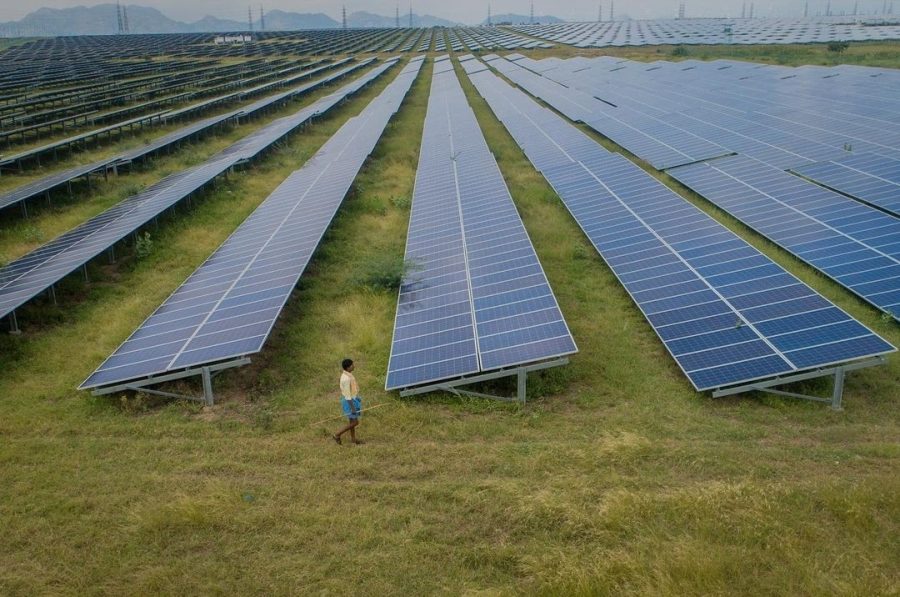Climate Change Brings the Heat to the United Nations
The World Best Choice: Football fields with long solar panels cover the countryside in India as the country increases their net green energy, Photo Courtesy: Abhishek Chinnappa, October 14, 2021.
November 11, 2021
With the United Nations General Assembly’s annual meeting wrapping up, one of the biggest, most heated debates of the year has been about climate change.
On Sept. 13-14, 2021, representatives of all 193 countries in the United Nations General Assembly met together in New York to discuss climate change and the advancements toward their goals in the Paris Climate Accords.
The goal for this year’s UN assembly is limiting global temperature increase well below 2 degrees Celsius, while pursuing efforts to limit the increase to 1.5 degrees.
In the UN assemblies, there are summits that are for different age groups, including the Youth4Climate summit. It is commonly held two to three weeks before the September 13-14 general assemblies, located in New York.
One participant at the 2021 Youth4Climate summit was Swedish activist Greta Thunberg. Thunberg, 18, objected to current world leaders’ opinions about their own progress. Just like when she went on strike from school in 2018 to counter climate change, she was back at it and arguing with key national leaders.
Thunberg stated, “Build back better. Blah, blah, blah. Green Company. Blah Blah Blah. Net zero by 2050. Blah, blah, blah.”
By debating global leaders like Boris Johnson, British Prime Minister, and India’s Prime Minister Narendra Modi, Thunberg made her mark in history for the younger generations. Even though she is younger than most global leaders, she has proven to be as wise in climate change debates.
It is also important to note that Thunberg has also started “Fridays for Future” for many young European students who wanted to protest in European capitals. Those turned to riots, which sparked concern on upper-level management at the United Nations and led them to adapt their schedules and goals for summits such as the general assemblies.
The Secretariat (upper-level management at the UN) has constantly enforced demands of rapid transitions for the sake of climate change. Leaders such as U.S. President Joe Biden and French President Emmanuel Macron, even went to the extent of having these assemblies more than once a year. The goal is to get more on track with a carbon-neutral future.
A UN climate tracker study shows that carbon emissions are on track to rise 16% by 2030, rather than fall by half, which is needed for the UN to meet its goal of keeping total global heating under the internationally agreed limit of 1.5℃.
Science teacher, Mr. Greg Sember, says that even though climate change is a slow process, 2050 is the world’s last deadline before it can become irreversible.
Sember says, “We are lucky to live in Connecticut because of the slim chance of being impacted by natural disasters and we must become more aware of climate change.”
Overall, the UN and climate change discussion is still under review. The next United Nations climate change summit is from Oct. 31 to Nov. 12. For more information about this conference visit: https://www.un.org/en/climatechange/cop26








